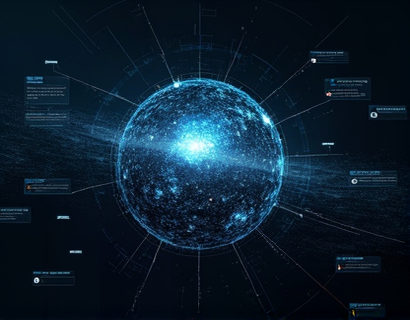Maximize Your Multi-Channel Announcements: A Strategic Guide for Businesses and Individuals
In today's fast-paced digital landscape, effective communication is crucial for businesses and individuals aiming to stand out and connect with their audience. Multi-channel announcements offer a powerful way to reach a broader audience, but managing these announcements across various platforms can be challenging. This comprehensive guide provides expert strategies to streamline your publishing process and enhance message visibility, ensuring maximum reach and engagement. By adopting a user-friendly approach, this guide is tailored for businesses and individuals seeking robust multi-channel solutions to optimize their communication strategy.
Understanding Multi-Channel Communication
Multi-channel communication involves using multiple platforms to disseminate information to your audience. This can include social media, email newsletters, websites, blogs, and more. Each channel has its unique audience and engagement dynamics, making it essential to tailor your messages accordingly. The key to successful multi-channel communication lies in consistency, clarity, and relevance across all platforms. By ensuring your message is cohesive and aligned with your brand's voice, you can build trust and credibility with your audience.
Benefits of Multi-Channel Announcements
Engaging your audience through multiple channels offers several advantages. Firstly, it increases the likelihood of reaching a wider audience, as different people consume information through different platforms. For instance, while some may prefer social media for real-time updates, others might rely on email for detailed information. By using multiple channels, you can cater to these diverse preferences, ensuring no segment of your audience is left behind.
Secondly, multi-channel announcements enhance message visibility and retention. Repeating your message across various platforms reinforces its importance and helps it stick in the minds of your audience. This repetition can lead to higher engagement rates, whether through likes, shares, comments, or direct responses. Additionally, multi-channel communication allows for better crisis management, as you can quickly address issues across multiple platforms, providing timely and consistent updates.
Challenges of Multi-Channel Announcements
While the benefits are clear, managing multi-channel announcements comes with its own set of challenges. One of the primary issues is the complexity of coordinating messages across different platforms. Each platform has its own set of rules, audience behaviors, and content preferences. For example, a tweet that works well on Twitter may not translate effectively to a LinkedIn post. This requires a strategic approach to content creation and distribution, ensuring that each message is optimized for its specific channel.
Another challenge is the time and resource commitment required to maintain a multi-channel presence. Managing multiple platforms can be time-consuming, especially for small businesses or individuals with limited resources. Automation tools and strategic planning can help mitigate this, but they require initial setup and ongoing management to be effective.
Strategies for Streamlining Multi-Channel Publishing
To overcome these challenges, it's essential to adopt strategies that streamline your multi-channel publishing process. Here are some expert tips to help you manage your announcements more efficiently:
- Centralize Your Content Management: Use a centralized content management system (CMS) to create, schedule, and publish content across multiple channels. This approach ensures consistency and saves time by allowing you to manage all your content from one dashboard.
- Leverage Content Repurposing: Instead of creating entirely new content for each channel, repurpose existing content to fit the format and style of different platforms. For example, turn a blog post into a series of tweets or a video summary for YouTube.
- Automate Where Possible: Utilize automation tools to schedule posts in advance, reducing the need for real-time management. Tools like Hootsuite, Buffer, or even built-in social media manager features in CMS platforms can help automate your posting schedule.
- Create a Content Calendar: Plan your announcements in advance using a content calendar. This helps you visualize your publishing schedule, ensure consistency, and avoid overlapping messages. A well-organized calendar can also help you identify the best times to post based on audience activity.
- Use Templates and Pre-built Messages: Develop templates for common announcements, such as product updates, promotions, or company news. Pre-built messages can be customized with specific details, saving time and ensuring a consistent brand voice.
Enhancing Message Visibility
To maximize the visibility of your multi-channel announcements, consider the following strategies:
Firstly, optimize your content for each platform's unique features and audience. For instance, use eye-catching visuals and concise text for Instagram, while providing more detailed information in a LinkedIn post. Understanding the nuances of each platform can significantly impact how your message is received.
Secondly, engage with your audience actively. Respond to comments, messages, and mentions promptly to build a community around your brand. Engagement not only increases visibility through likes and shares but also fosters loyalty and trust. Consider running interactive campaigns, such as Q&A sessions or polls, to encourage audience participation.
Thirdly, utilize paid advertising to boost your reach. Platforms like Facebook, Instagram, and LinkedIn offer powerful advertising tools that allow you to target specific demographics, interests, and behaviors. By investing in targeted ads, you can ensure your announcements reach a broader and more relevant audience.
Measuring Success
To evaluate the effectiveness of your multi-channel announcements, it's crucial to track key performance indicators (KPIs). These metrics provide insights into how your messages are performing across different platforms and help you make data-driven decisions for future improvements. Key KPIs to monitor include:
- Reach: The number of unique users who have seen your announcement.
- Engagement Rate: Likes, shares, comments, and other interactions relative to the number of impressions.
- Click-Through Rate (CTR): The percentage of users who click on a link in your announcement.
- Conversion Rate: The number of users who take a desired action, such as making a purchase or signing up for a newsletter.
- Audience Growth: The increase in followers or subscribers across your channels.
Using analytics tools provided by each platform or third-party analytics software, you can gather and analyze these metrics regularly. This data-driven approach allows you to identify what works and what doesn't, enabling you to refine your strategy continuously.
Conclusion
Maximizing your multi-channel announcements requires a strategic and well-planned approach. By understanding the benefits and challenges, streamlining your publishing process, enhancing message visibility, and measuring success, you can effectively connect with your audience across various platforms. Embrace the tools and strategies outlined in this guide to optimize your communication strategy and build a stronger relationship with your audience. Remember, the key to successful multi-channel communication is consistency, relevance, and engagement.










































